
- Index
- Authenticity
- Characteristics
- Genre
- Abstract (96)
- Abstrait (363)
- Art Deco (52)
- Art Déco (109)
- Art Naïf (30)
- Art Nouveau (97)
- Cubism (13)
- Cubisme (26)
- Expressionism (60)
- Expressionnisme (162)
- Fauvisme (13)
- Modern (56)
- Moderne (18)
- Naive Art (21)
- Pop Art (40)
- Street Art (62)
- Streetart (87)
- Surrealism (27)
- Surréalisme (103)
- Symbolisme (14)
- Other (1467)
- Support
- Theme
- Abstract (119)
- Animals (33)
- Architecture (3)
- Art (2)
- Calligraphy (2)
- Character (160)
- Erotic Drawings (3)
- Family (2)
- Fantastic (7)
- Flower, Tree (12)
- Genre Scene (9)
- Landscape (39)
- Music (8)
- Narrative Figuration (2)
- Normandy (3)
- Nude (7)
- Religion, Mythology (7)
- Seascape, Boat (5)
- Sport (2)
- Still Life (8)
- Other (2483)
- Type
WUNDERLICH Paul Original Signed Lithograph Germany 20th Century Surrealism Dali
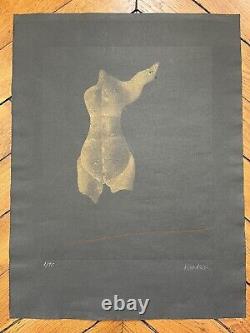
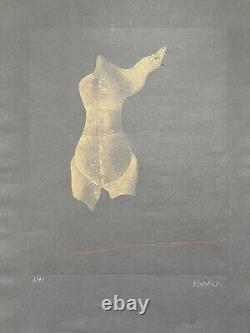
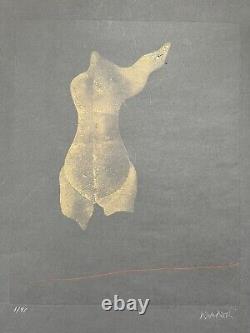
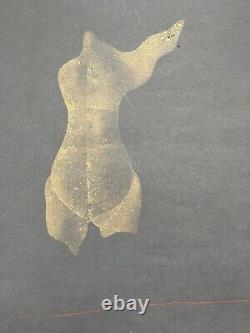
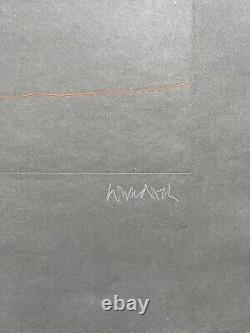
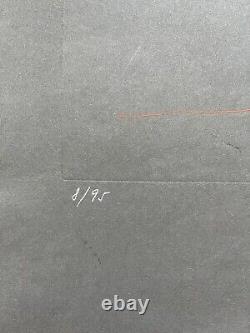
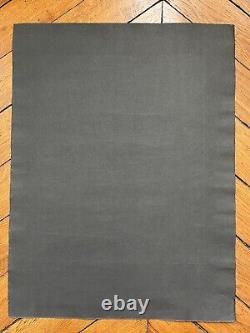


"Golden Torso with 1 Wing" (1969). Original lithograph on black Ingres signed in white pencil by the artist at the bottom right and numbered at the bottom left 8/95.
Sheet dimensions: 66 cm x 50 cm. Plate dimensions: 47 cm x 37 cm. The German painter, engraver, sculptor, and lithographer Paul Wunderlich was born in Eberswalde in 1927. He studied at the School of Fine Arts in Hamburg from 1947 to 1951, alongside Horst Janssen and Reinhard Drenkhahn. After completing his studies, he was appointed professor for graphic techniques (lithography and engraving) and remained in this position from 1951 to 1960. After printing Emil Nolde's engraving "Der König und seine Mannen" in 1951, he printed eleven lithographs by Oskar Kokoschka the following year for his narrative "Ann Eliza Reed". In 1957, he created "tachiste" style paintings, a period of his work that he would later destroy almost entirely. Until the late 1950s, the artist created figurative works (painting and engraving), choosing his themes from contemporary German history. Quickly, his work took on an erotic tone that he treated in a surrealistic manner. His art, which mixes contemporary and classical references, is inspired by mythology and emphasizes the human form. Over time, Paul Wunderlich built up an important graphic oeuvre (engravings and lithographs).Between 1961 and 1963, Paul Wunderlich lived and worked in Paris, where he honed his lithography technique at the Desjobert workshop. The second half of the 1960s saw the artist experimenting with various creative paths; Wunderlich drew inspiration from photographic models, painted with an airbrush, and created stencils. He delved into the world of sculpture and refined his gouache art, a medium that would become of utmost importance in Paul Wunderlich's creative process. In the 1970s, Paul Wunderlich studied Dürer, Ingres, and Manet; he notably produced the series "Dürer paraphrase". The artist primarily focused on sculpture from 1980 onwards.
His art is present in the collections of major international museums such as the MoMA - Museum of Modern Art in New York, the National Library of Paris, the British Museum in London, etc. In the mid-1990s, numerous Japanese museums organized retrospectives of his works (in Osaka, Hakkeido, and Gifu). Paul Wunderlich was a member of the Royal Academy of Sciences, Letters and Fine Arts of Belgium and the Freie Akademie Der Künste in Hamburg.
Paul Wunderlich lived and worked in Hamburg and France.
